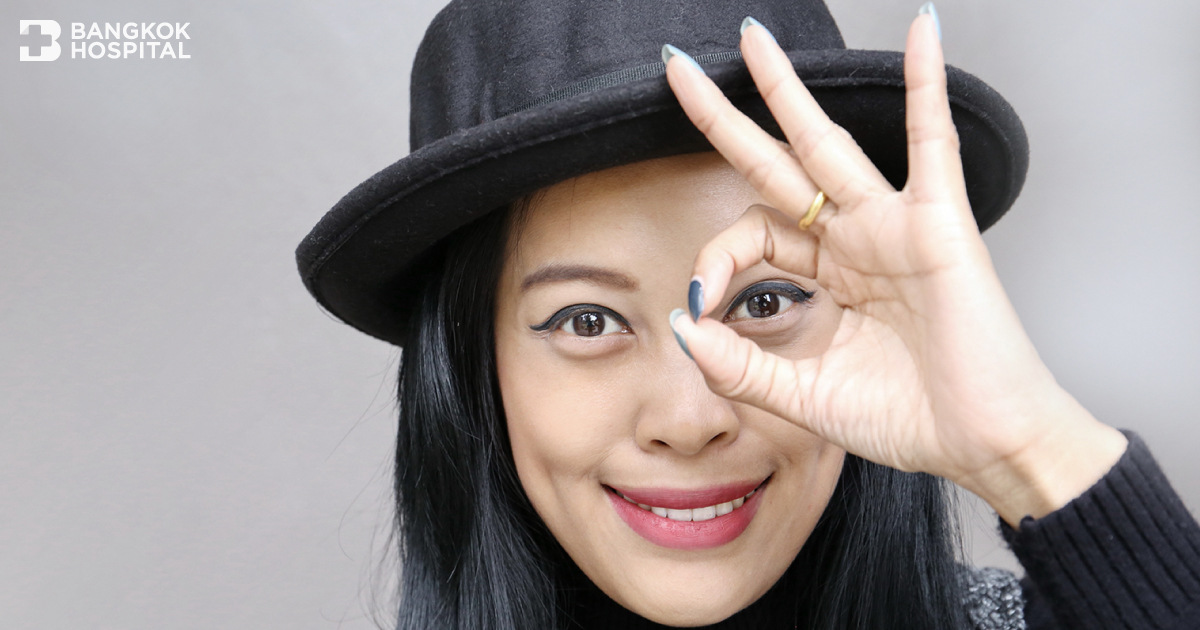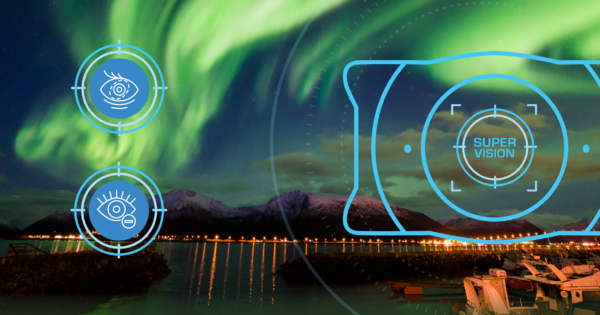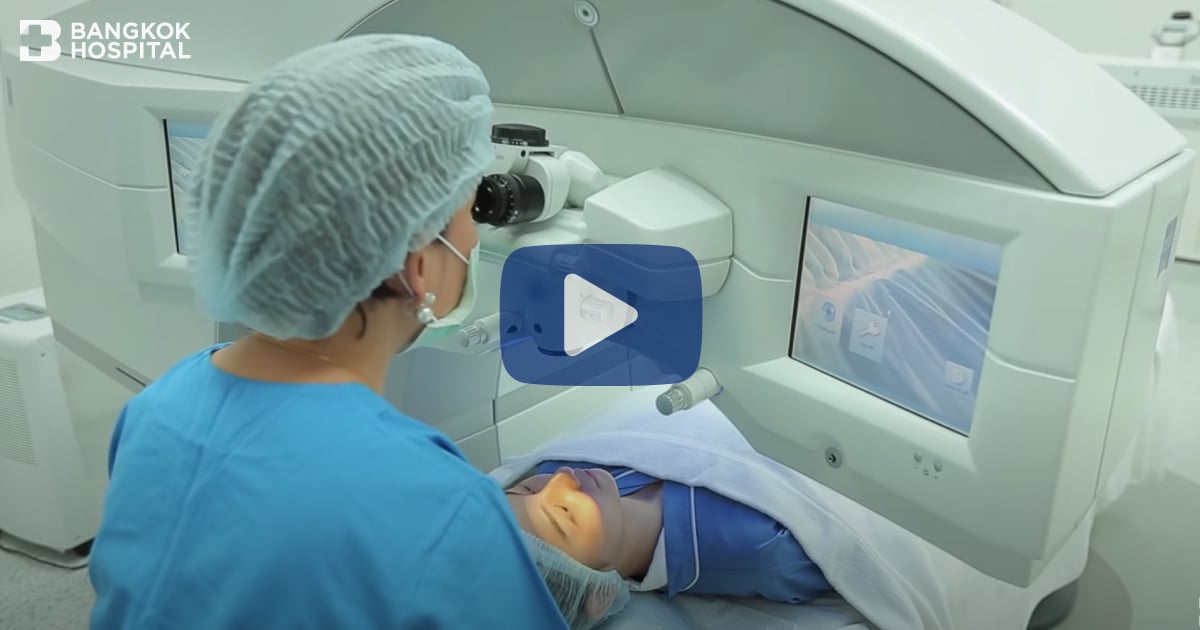Dr. Somsarun Watthanachote said that FemtoLASIK is a LASIK procedure performed entirely with lasers, evolving from the traditional method that used a blade to create the corneal flap, to now using a laser instead. The Bangkok LASIK Center has chosen to use the Femtosecond laser, Visumax model, and the new Mel 80 laser from Carl Zeiss, which is currently recognized for its outstanding qualities. The procedure is very straightforward. Patients will receive an anesthetic and antibiotic drops beforehand, followed by the eye area being cleaned with antiseptic. During the corneal flap creation, patients may feel a slight pressure and will be able to see light while the laser is creating the corneal flap. The whole process takes less than 25 seconds. After that, the doctor will lift the created corneal flap, then use an Excimer laser to reshape the cornea before cleaning the area and repositioning the flap back. The cornea can heal itself within 3-5 minutes. The surgery takes only 15 minutes per eye, and patients can see immediately after the surgery, although not clearly yet. This method enhances precision and safety and requires a short recovery period.
Post-surgery care is crucial to ensure the FemtoLASIK procedure yields the expected results. After the surgery, patients may experience some irritation and should rest their eyes periodically during use, wear eye shields every night, and strictly avoid getting water in their eyes for about 1 week until allowed by the doctor. Antibiotic drops are used to prevent infection, and artificial tears should be applied frequently to reduce dry eye symptoms or irritation. Makeup should be avoided around the eye area, no swimming for 2 weeks, and no rubbing of the eyes for 1 month. Also, patients should follow up with their doctor as scheduled and strictly adhere to the doctor’s advice.
“LASIK can be performed on individuals aged 18 years and above with stable vision. After the procedure, patients can see both near and far without glasses. However, age-related vision deterioration is unavoidable. Everyone will experience presbyopia as they approach 40 years old. Therefore, patients who have undergone LASIK, although having clear vision at all distances, will need reading glasses when they are near or over 40 years old, or they may opt for LASIK again to correct presbyopia, which is the same as normal-sighted individuals who need glasses for near tasks as they age. However, distant vision remains clear until the onset of cataracts around the age of 60-70 years when cataracts become inevitable, similar to conditions like benign prostatic hyperplasia in men or developing grey hair. Thus, it is impossible to maintain perfect vision throughout life because our eye muscles degrade with age. Normally, we explain this to patients upfront, but for those who want LASIK and are over 40 with presbyopia alone or in combination with pre-existing myopia, hyperopia, or astigmatism, there are several treatment options available. These treatments aim to help individuals live life without the need for glasses, with different treatment choices depending on the person,” said Dr. Tarinee.
Even though correcting vision with LASIK is a permanent and effective method, there are still limitations, especially in individuals over 40 years old who develop presbyopia, a deterioration of vision with age. These corrections require more complex considerations and conditions.
For individuals considering LASIK, the main qualifications include being at least 18 years old and having stable vision for at least 1 year. Candidates should not want to wear glasses or contact lenses due to their occupation, daily activities, or hobbies that make it inconvenient. They should not be pregnant or breastfeeding, have no severe eye or corneal diseases such as macular degeneration or severe dry eye, and have no systemic diseases that could affect wound healing, such as SLE. It’s also crucial that patients have a thorough understanding of the LASIK procedure and realistic expectations. “The patient’s understanding and expectations are the most critical aspects of undergoing LASIK. Patients must have a positive attitude and realistic expectations because every treatment has risks. However, choosing modern technology for treatment can help minimize or avoid potential risks and dangers,” said Dr. Tarinee in conclusion.
Apart from the modern technology like Femtosecond laser, Visumax model, and the new Mel 80 laser produced by Carl Zeiss, the Bangkok LASIK Center is fully equipped with expert doctors and JCI standards of care, truly accommodating patients’ needs.
Source: Matichon Newspaper










